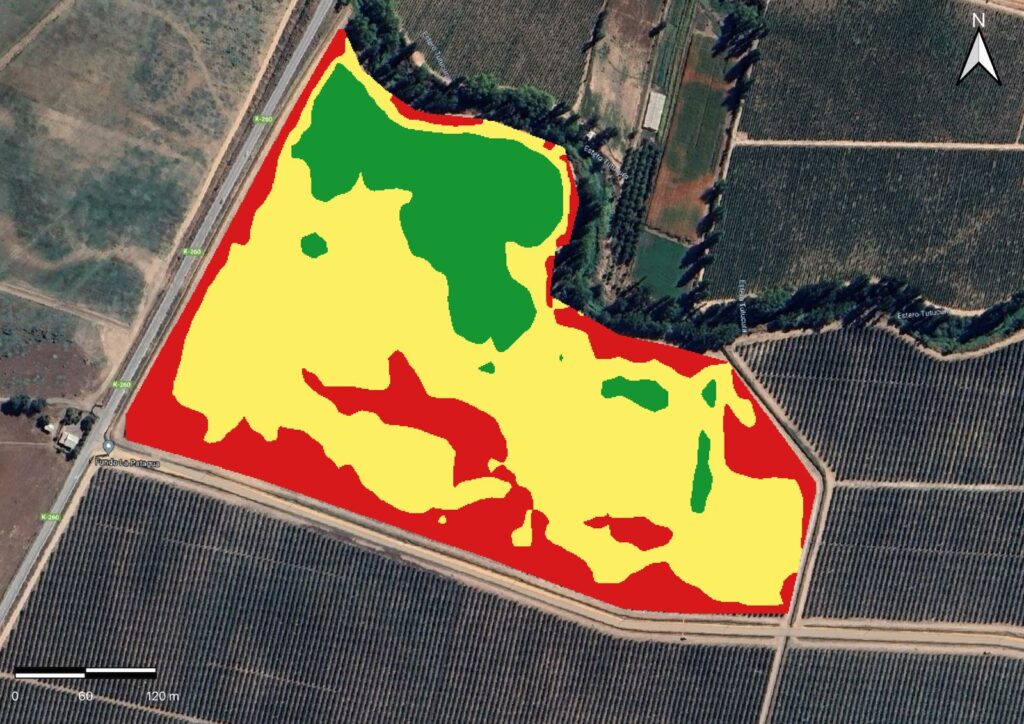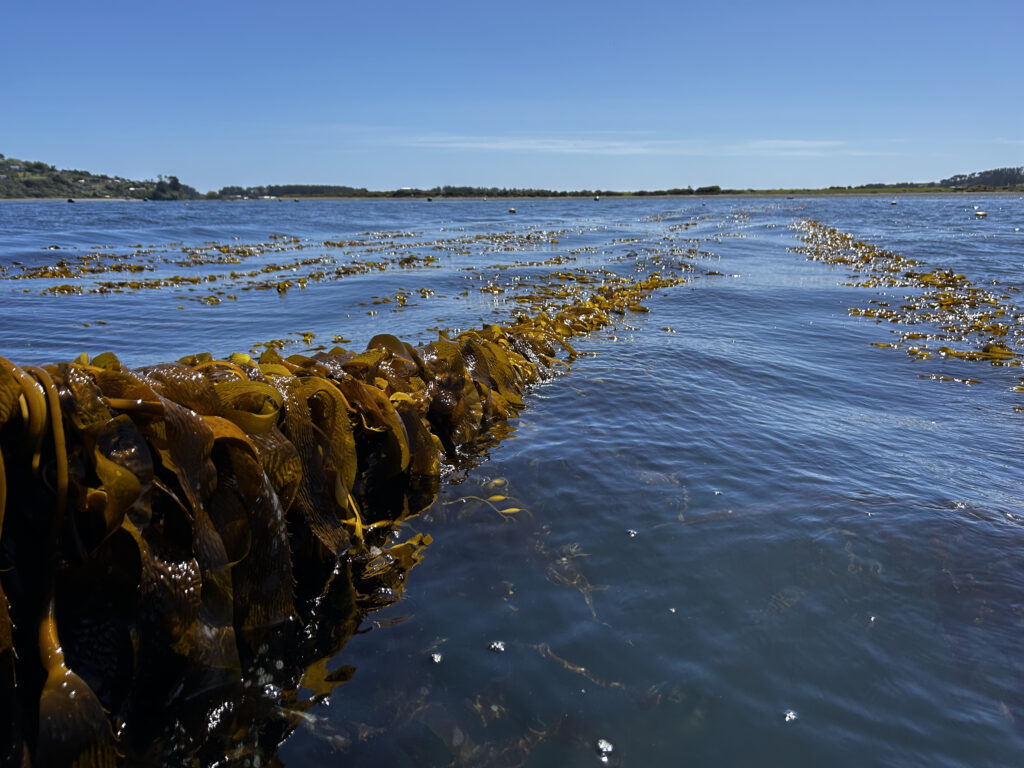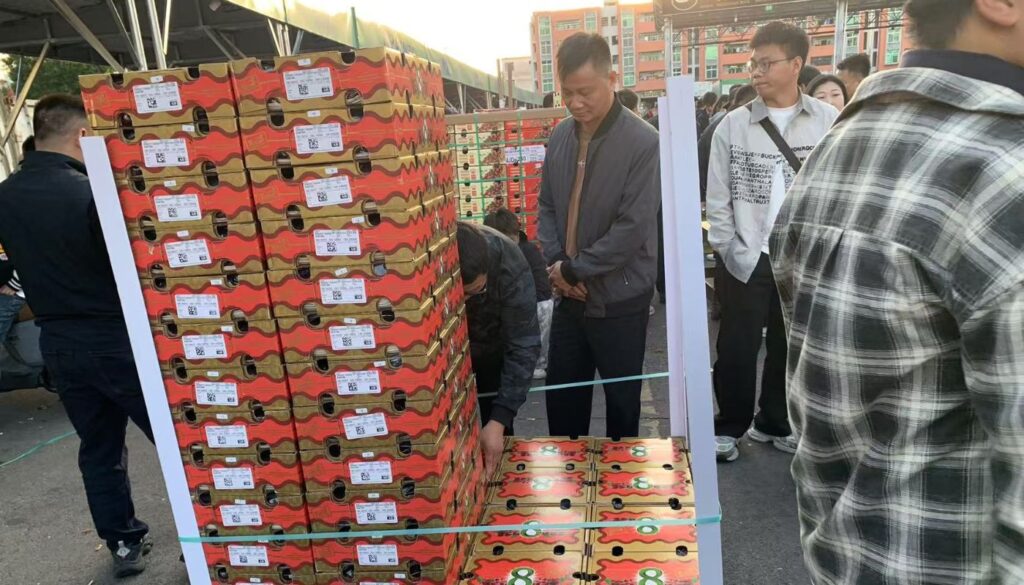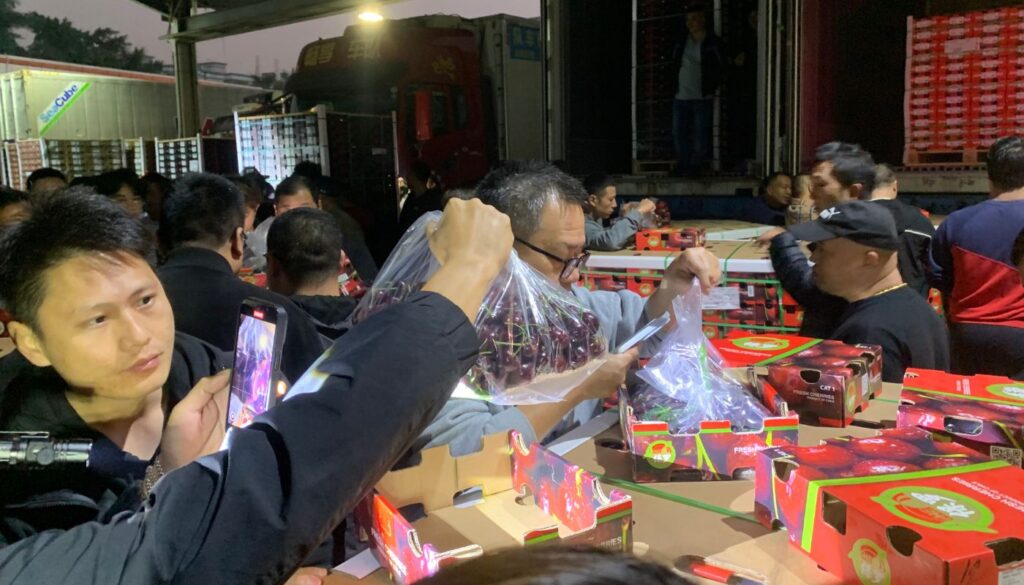By: Francisca Barros, Jessica Rodriguez, Militza Ivelic – TRIO KIMÜN SPA
From the moment the cherries are harvested from the tree until they reach the destination market, the fruit is exposed to water losses that occur at different stages of the logistics process, from harvesting to maritime transport, with the greatest impact occurring in the stages before packaging in modified atmosphere bags.
In the particular case of cherries, the organ in which water loss is first evident is the pedicel; this is a herbaceous tissue with a thinner epidermis than that of the fruit and due to its high surface/volume ratio it is more sensitive to dehydration. The green and turgid appearance of the cherry pedicel is considered an indicator of the degree of freshness of the fruit (Linke et al., 2010), while, due to the effect of water loss, it becomes brown and thin, which gives the fruit an aged appearance, reducing its commercial value. (Candan et al., 2017).
In the orchard, climatic conditions of temperature and humidity will influence this water loss, and prolonged waiting times for hydrocooling will negatively affect the appearance of the pedicel. Any product that is exposed to the heat of the sun and low relative humidity will suffer a significant initial loss of water, the effects of which cannot be reversed with any post-harvest procedure or technology.
Dehydration and browning of the pedicel are the result of water loss, in this process the integrity of the membrane is affected, with the subsequent oxidation of compounds inside the cells, which as a result give the brown coloration (Linke et al., 2010). Environmental factors such as relative humidity (RH) and temperature are elements that affect the Vapor Pressure Deficit (VPD), which expresses the capacity of the atmosphere to extract water from the tissues (Knoche, 2015).
Strategies to minimize water loss at the harvest stage include the following measures:
1. Harvest in the morning
Cherry harvesting usually starts early in the morning (6:00 AM) and lasts until 2:00 PM. The purpose of this measure is to prevent the fruit from being exposed to high temperatures for too long. It is generally recommended that the fruit remain in the field for no more than 4 to 6 hours.


Water loss is usually expressed as weight loss of a tissue and, in the case of cherries, to see the effect of pedicel dehydration, the fruit is weighed as a whole. Graphs 1 and 2 show the effect of exposure time after harvest to a condition of 20ºC and RH of 60% and 70%, respectively; increases in weight loss of 60% are observed every 4 hours, reaching critical levels under these conditions at 6 hours (Zoffoli, 2000).
2. Use physical barriers to protect the fruit from the sun
The use of physical barriers prevents the temperature of the harvested fruit from rising and, depending on the material used, also allows for a better humidity differential to be maintained around the fruit.
In studies conducted by Kupferman (1998), it was observed that fruit kept under shade had a lower pulp temperature than fruit exposed to the sun, in addition to showing fewer brown pedicels (Table 1). Exposure to the sun for more hours will result in the fruit ending up with a higher temperature and more damage to the pedicels.

3. Reflective covers or tent
The reflective cover or tent is an element used to protect the fruit in bins, being used alone or in combination with sponges.
In a study by Schick et al. (2002), where a three-layer Mylar™ cover was used (product contact layer was silver, middle layer was standard woven polyethylene material, and the outer layer was a white glossy cover), fruit temperature was maintained or slightly lowered at harvest and relative humidity increased by 100% around the fruit. Meanwhile, fruit kept in the shade covered by cardboard or conventional tarps had increased temperature and relative humidity decreased, as shown in Figures 3 and 4.

4. Wet sponges
In our country, wet sponges are used, either individually (tote by tote protecting the first row) or complete sponges to cover the surface of the bins; this prevents direct sunlight on the fruit and adds humidity, the latter achieved by adding chlorinated water to ensure safety. This work is often carried out poorly, where humidity is not implemented adequately and dry materials end up being used.
5. Perforated plastic caps
In recent seasons, macroperforated plastic caps have been tested for bins that would increase the relative humidity (RH) inside them.
In order to obtain more practical information on the effects of using different fruit protection products, the Trío Kimün team carried out evaluations in the Pencahue and Quinta Morza areas, recording relative humidity, ambient temperature and pulp temperature under the protective element during the harvest and storage period.
The materials used were: individual, well-wet sponge, individual, dry sponge, reflective tent, complete wet bin sponge and plastic caps (Figures 1 to 4). Sensors to measure relative humidity (RH) and temperature (T°) were placed in the second row of totes in each bin evaluated, with one tote below and another above the sampled box.

6. Records of environmental conditions

As can be seen from Figure 5, all the materials used increased the percentage of relative humidity in the environment beneath them, with the individual dry sponge having the least effect, increasing from 40 to 75%, while the rest of the materials did so up to 80 to 90%. The individual well-wet sponges had the highest levels of humidity (over 85%).

Air temperature with all protective covers decreased by 1°C to 3°C, with the well-wet individual sponge and reflective tent showing the greatest decreases (Chart 6A).
As for pulp temperature, the well-wet individual sponge and the reflective tent managed to reduce the temperature by 0.8ºC, the large sponge in the bins rather maintained it; the dry individual sponge and plastic cap in the room between the rows increased the temperature, but in the collection center it decreased reaching values similar to those during the harvest.

As can be seen in Figure 7, there are statistical differences between the different protection materials, where the fruit with the wet individual sponge presented the lowest weight loss per hour (0.05%/hour), followed by the reflective tent (0.107%/hour). The dry individual sponge presented the highest weight loss values (0.161%/hour).
The above data is directly related to the environmental information collected; the material with the least weight loss is the one that shows the highest RH and the lowest air and pulp temperatures, while the reflective tent, despite lowering the temperature, provides approximately 5% less RH.
Materials such as plastic caps and large bin sponges showed lower weight loss than dry sponges, but due to limited data, they were not included in the statistical analysis.
Conclusions
The use of protective elements or barriers at the time of cherry harvest has a positive influence on the final condition of the product, improving the HR and T° conditions inside the bins. Therefore, it is important to use them immediately after harvest when the bins remain between the rows and the fruit is not exposed to direct sunlight. In the case of using sponges, this must imply the use of adequate humidity, which must also ensure safety. Otherwise, it is better to use materials such as reflective tents, taking the same precautions as using them between the rows immediately after harvest, while the bins are being filled. In addition, it should never be forgotten that the best way to minimize these losses is to reduce the time between harvest and hydrocooling.
The proper choice and use of these elements will directly impact the weight loss results.
Literature
Candan, AP, Romero, S., and Jara, G. 2007. Use of modified atmospheres in cherries cv. Lapins. Institute of Nutrition and Food Technology, EEA Alto Valle, 11.
Knoche, M., Athoo, T.O., Winkler, A., & Brüggenwirth, M. (2015). Postharvest osmotic dehydration of pedicels of sweet cherry fruit. Postharvest Biology and Technology, 108, 86-90.
Linke, M., Herppich, W.B., & Geyer, M. (2010). Green peduncles may indicate postharvest freshness of sweet cherries. Postharvest biology and technology, 58(2), 135-141.
Rodríguez, J. 2014. Postharvest management with an impact on the quality and condition of cherries. Foundation for fruit development (FDF), PDT Cerezos.
http://www.fdf.cl/pdtcerezos/2014/actividades/archivos/4.pdf
Schick, J.L., & Toivonen, P.M. (2002). Reflective tarps at harvest reduce stem browning and improve fruit quality of cherries during subsequent storage. Postharvest Biology and Technology, 25(1), 117-121.
Zoffoli, J.P. 2000. Evaluación crítica del Manejo de Postcosecha de Cerezas. Pontificia Universidad Católica de Chile. https://www.agrotechnologia.es/index_htm_files/Cerezas%20y%20Durofel.pdf








